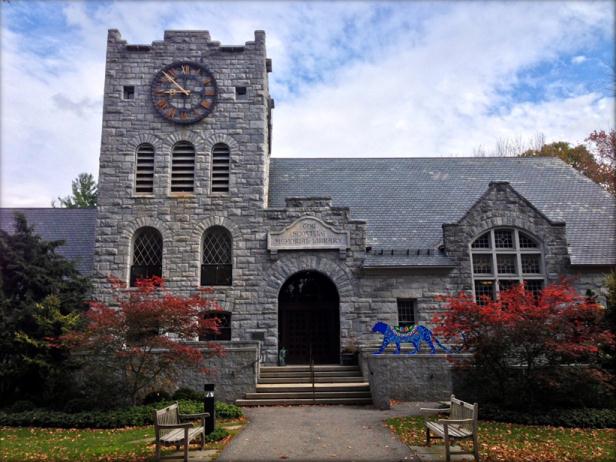By Eric Chin
With the advent of the Internet, information on virtually any topic can be called up with a few keystrokes or taps on a screen. Slim, stylish e-readers crammed with tens or hundreds of books replace clunky paperbacks and hardcovers. With such advanced technology becoming more and more accessible every day, the library has become a mundane option, often resorted to only when teachers enact the dreaded Wikipedia-ban or require book sources. Students take libraries for granted because of their friendly hours, vast amounts of information, and welcoming environment, all free of charge. Prior to the 19th century, however, no such services existed in the United States. Around the year 1800 that would begin to change.
In 1771, Richard Smith, the owner of a local blast furnace, made a proposition to the residents of Salisbury. He promised to buy 200 books from London, England, if the public would subsidize his purchase. Thirty-nine residents agreed to donate money, and the Smith Library was created. Patrons of the library could borrow and return books four times a year, for a modest fee, on the third Monday of every third month. The library collected damage fees, the most common of which was for “greasing” caused by candle wax drippings. In establishing the regulations for their new library, the original subscribers noted their motivation for financially supporting the library:
Whereas, we the subscribers looking upon it consistent with our duty to promote and encourage every rational Plan that may be proposed for the Encouragement of true religion; for the Promoting of Virtue, Education, and Learning; for the Discouragement of Vice and Immorality…a Library of Books on Divinity, Philosophy, and History, &c. may be conducive to bring to pass the above laudable design…
The residents originally saw it as their duty as faithful Christians to promote and encourage Christianity and its morals and values in their community, and Smith purchased books with this in mind. When the Revolutionary War broke out, Smith remained loyal to the King and fled to England. Even in Smith’s absence, his library remained open for a number of years. In 1803, Caleb Bingham, a Salisbury native and Boston book seller, donated 150 books to create a library for youth. Seven years later, a town meeting voted to utilize $100 from town funds to expand the collection, which was gathered and kept in the town hall. With this decision, Salisbury’s library became the first publicly funded library in the country.
While today’s Scoville Library has a huge collection, it is also known for the iconic building, designed in the Richardsonian Romanesque style, which houses over 35,000 items. The building was commissioned in the early 1890s when Salisbury native Jonathan Scoville left $12,000 in his will to build an appropriate structure for housing the collection that was deteriorating in the town hall. The gray granite building was designed by Stone, Carpenter & Willson, an architectural firm based in Providence, Rhode Island, who designed several buildings on the Brown University campus. Miss Grace Scoville donated the tower clock which still chimes quarter hours. The building was originally intended to serve as a community center as well as a library, and it contained an auditorium with a piano, a stage, and a balcony. Over the reading room fireplace rests a 15th-century stone carving sent by England’s Salisbury Cathedral.
The Scoville Library was not the first library in the United States, or even in Connecticut. Collections of books known as libraries were assembled far earlier even than 1771 when Smith purchased the original collection. It was, however, the first publicly funded library in the country, and more than 240 years later, it continues to serve the town of Salisbury as a resource for education and entertainment.
Eric Chin lives in Salisbury and is a junior at Housatonic Valley Regional High School.









